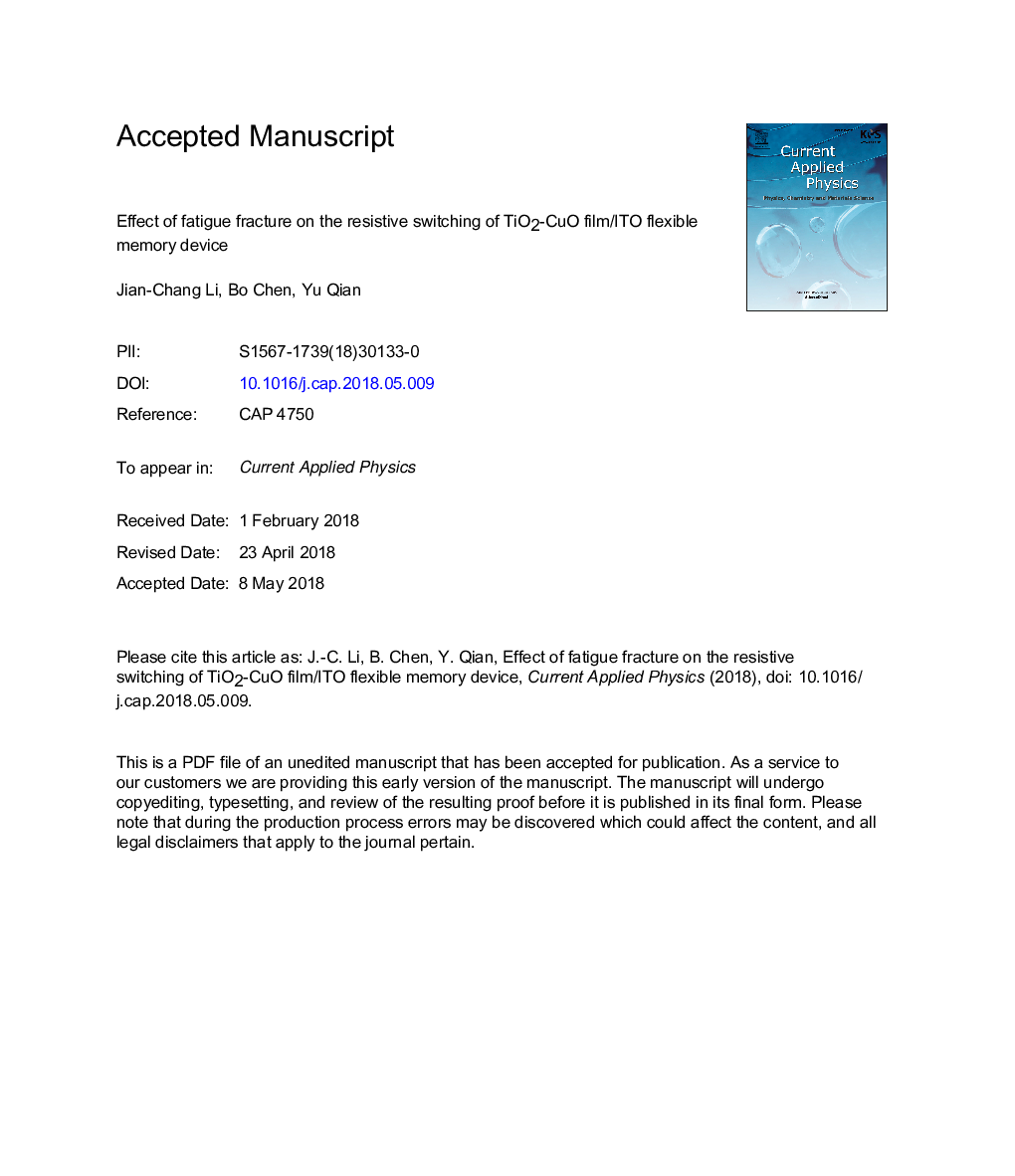| Article ID | Journal | Published Year | Pages | File Type |
|---|---|---|---|---|
| 8147556 | Current Applied Physics | 2018 | 26 Pages |
Abstract
We fabricated the GaIn/TiO2-CuO/ITO resistive memory and studied the effect of fatigue fracture on the switching performance. The device shows the stable bipolar resistive switching over 108â¯s under ambient condition. The ON/OFF ratio decreases seriously with increase of bending cycles. The main fatigue fracture caused by dynamic strain includes micro defect between nanoparticles, vertical crack along the film thickness and interfacial delamination between layers. Finite element analysis indicates that channel crack plays a key role to cause the interfacial delamination between function layer and ITO electrode. The channel crack and interfacial delamination can hinder the formation of treeâlike conduction filaments. Moreover, oxygen via the cracks can be easily transformed to ions and reduce the density of oxygen vacancies under the catalytic assistance of CuO. Our studies may provide some useful information for inorganic materials applied in flexible nonvolatile memory.
Related Topics
Physical Sciences and Engineering
Physics and Astronomy
Condensed Matter Physics
Authors
Jian-Chang Li, Bo Chen, Yu Qian,
